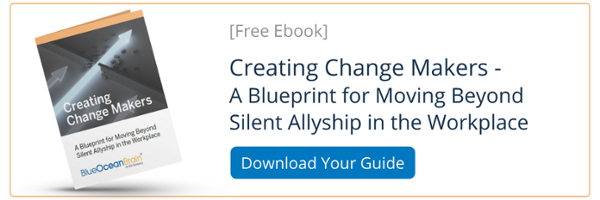Diversity, equity, and inclusion (DEI) topics are top-of-mind in organizations of all sizes across industries. Not only have businesses come to recognize that DEI drives bottom-line business results, but they’re also well aware that the most recent entrants to the workplace—Generation Z—are strongly committed to DEI and expect their employers to be so as well.
In a tight labor market, companies cannot fail to provide the kind of climate and culture that today's workers demand and deserve. And yet, today, there are five generations in the workplace—not all are as committed to DEI as Generation Z. In truth, resistance to your DEI efforts can cut across all ages and all employee demographics.
Understanding the resistance
There are likely pockets of resistance to DEI efforts in any organization. Although resistance can be a generational factor, it also stems from learned behaviors and experiences. All employees have experienced diversity in different ways—some in positive ways that position them well to be active allies, but some in ways that generate more resistance than understanding. Even coming from different parts of the country or rural vs. urban environments can impact perceptions of diversity.
Resistance can also relate to a sense of being somehow marginalized by a focus on diversity by those who represent the majority. White men, for instance, may feel they are victimized or that their opportunities are diminished because they represent the majority and are not “diverse.”
Or resistance may be based on other forms of misunderstanding and misconceptions, or simply a lack of lived experience.
Conversely, even employees who may consider themselves very supportive of the differences among their colleagues often don’t quite know how to express that support—they don’t have the right words, or they may worry about inadvertently offending someone. So they don’t say anything.
But that’s not being an active ally. That, too, is a type of resistance.

Focusing on DEI through many different lenses
Traditional, mandatory DEI training has not been highly successful—it has not driven desired results in most organizations. That type of training was often delivered once a year, focusing on compliance and in a tone that made employees feel they were being cast as villains—that they were doing something wrong and were being scolded.
Employees often left these sessions feeling more victimized than enlightened—and certainly not feeling ready to go out and advocate on behalf of their diverse colleagues. It is incredibly difficult to get through to people if they are defensive and have their guard up.
So how can we effectively challenge resistance to DEI change? Through effective communication.
Corporate leaders, HR professionals, frontline managers, and supervisors need to be poised and prepared to have courageous conversations with employees to truly:
- Understand employees' points of view
- To identify areas of misunderstanding
To arm employees with the learning, resources, and support they need to be active allies.
Communicating effectively
To encourage employees along in your DEI efforts, they need to feel that they are part of the solution—not part of the problem. Effective communication isn't about hammering people over the head in a punitive way. It's about being inspirational and uplifting by demonstrating the why behind DEI efforts in ways that resonate with employees. In ways that leverage storytelling, include their perspective and explain how these efforts will impact them.
We are, of course, all diverse. The value of that diversity reflects in the different experiences, insights, and opinions we bring to any conversation, project, or collaboration.
This isn't just about compliance—it's about creating positive interactions that help you push through resistance. It's the kind of communication that cultivates active allies who will be proactive in taking positive, lasting actions to help you build a more inclusive work culture—not just because it's important to you, not just because it's important to members of specific categories of diversity, but because it's important to them.
Keeping the conversations and learning ongoing
The road to DEI is a journey, not a destination. It’s not achieved through a single event, an annual event, or a few operational initiatives. In fact, it’s never fully “achieved.” Building a strong DEI culture is an ongoing process that will ebb and flow. You’ll see improvements and you’ll experience setbacks. Why? Because your internal and external environments are constantly changing. That’s the challenge--and the opportunity.
Begin your DEI journey with the intention of sparking and guiding continuous learning and conversations that will extend into the future. Embed learning opportunities throughout your organization and the employee experience beginning with onboarding and extending through the entire employee lifecycle.
Access powerful DEI tactics
As important as people may find diversity and inclusion goals, it can take time to help them feel comfortable and confident in showing allyship in the workplace. Moving beyond talk to action requires an innovative strategy—and we got you covered. Check out our new ebook, Creating Change Makers - A Blueprint for Moving Beyond Silent Allyship in the Workplace.




![[Guide] Why L&D is the Key to Achieving Your Company Culture Goals](https://blog.blueoceanbrain.com/hs-fs/hubfs/1283373_Images%20-%20BOB_4_012722.png?width=760&name=1283373_Images%20-%20BOB_4_012722.png)
